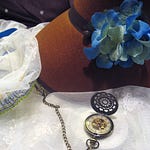Civilization moves forward because of its engineers. That is so because engineers make the dreams of leaders come true.
Kings don’t build civilizations. Engineers do.
In our modern world, what we need more than any other skill or know how, is engineering. All that AI is brought to us by engineers.
What exactly is an engineer?
The dictionary tells us that it is a person who designs, builds, develops, invents or maintains engines, machines and public works. There is a verb that goes along with that noun.
To engineer means to design, develop, create, and or build a machine or structure.
Engineers come in many varieties.
An engineer begins his, or her, life as smart kid, who has a way with math and a mind that visualizes possibilities. This kid goes on to build and/or make stuff. Humanity advances, and continues to advance because these types of individuals are always tinkering around with ideas, like how to turn clumsy tool into a more refined model. Or how to take fibers, turn them into thread, and weave them into clothing.
Thousands of years ago, when life became more sedentary, chiefs or kings wanted to build cities. But to build those cities, they need water. So a king will ask an engineer if he can bring water from the mountains.
Oh, an engineer likes problems like that.
I imagine the conversation goes something like this.
King: “See that snow on those mountains?”
Engineer: “Yes.”
King: “Can we bring that down to us, as water?
Engineer: “Yeah.”
King: “How do we do that?”
Engineer: “We build an aqueduct.”
King: “Oh. What’s an aqueduct?”
Engineer: “It’s like those canals we dug so the farmers can get water from the river.”
King: “Oh, so we dig more canals?”
Engineer: “No, we build them, from mud and rocks. We have to dig out the mud from the rivers, because essentially what you are asking me to do is build a river from those mountains to our rivers and canals.”
King: “You can really do this?”
Engineer: “Yes. I’ve got it all figured out in my head.”
King: “You mean no one has ever done this before?”
Engineer: “Not that I know of.”
King: “What do we need to pull this off?”
Engineer: “Lots of gold to pay lots of laborers who will dig out the mud and rocks. More gold to buy lots of donkeys to help us haul stuff.”
The king hands over the gold, and the engineer goes to work. Presto, water is controlled, and brought down to the city. More canals are also dug, as irrigation systems are developed.
Those are the basics of civilization. No water, no farms, no cities.
See how that works?
Canals don’t only bring water to farms. Canals are waterways, like highways, that merchants use to distribute trade goods throughout the land. Canals offer a smooth ride for those who have delicate goods to sell. In fact, canals can be called the first smooth ride. Not until trains came along, and they were not always without their bumps and swaying, did humanity have such a smooth ride.
From the beginning, business ruled the cities. When it came to distributing goods across seas, once again the engineers set to work to create steering systems for boats and ships. Before there were cars with steering wheels, ships had them. A mechanism had to be invented to attach the ships steering wheel to a rudder. Thousands of years later, they attach steering wheels to the wheels in cars.
The are many other ways that the engineers advanced humanity. Look at the building of the cities themselves. Villages began with one story housing, some built with basements, and some with roof top living spaces. That means the buildings had to structured in a way to withstand gravity. And then when the engineers figured out the gravity thing, multi-storied buildings began to be erected.
From palaces to hanging gardens, the engineers are getting rich. And there is plenty of work for the laboring classes.
Think about the pyramids, and the Parthenon and the coliseum in Rome. And there’s more recent buildings, like Notre Dame, completed in 1260, Windsor castle, built in the 12th century. All of which are still standing.
What else did engineers do, back in the day? They figured out how to build roads, how to use wheels for all sorts of purposes, and let’s not forget the war machines, like trebuchets and battering rams.
Engineers also invented the Ballista. This is a missile, or rocket launcher that would send huge bolts and arrows, over castle walls. Flash forward, and the engineers have made rockets that both destroy and advance us. They have given us a space station, flown us to the moon, and one day, will set us down on Mars.
Personally, my favorite engineers are people who no one realizes are an engineer. What do I refer to?
Tailors and pattern makers. Clothing engineers if you will.
For the first 200,000 years of wearing clothing, humans could not figure out how to make a garment that fit the body. First there were animal skins, that could be softened enough to making clothing that could be shaped to the body. Once weaving of plant and animal fibers became a thing, for some reason, people just plum forgot, or didn’t have a clue, on how to fit the clothing to the human body.
Oh they could drape. But it wasn’t until the Minoan empire that the first bodices and fitted skirts made it onto the scene. That was about 3500 years ago. But once the Minoan empire collapsed, those fashions went away.
The Egyptians had some form fitted clothing, but nothing like the tailoring of the Minoans. It would not be until the 15th century that the clothing engineers figured out how to make a garment that fit. Et voila, fashion is born. No more draping cloth over bodies. No more using belts and pins to bring shape to the garment. The clothing engineer, aka, a tailor, began to cut pieces for various parts of the body. That meant that each individual was measured, and fitted.
If that isn’t engineering, I don’t know what is.
Loose, unstructured clothing would not be seen again until the late 18th century. But that was a brief interlude. The Victorian fashion was a return to tailoring for all, and this lasted until World War 1. That’s when engineering entered the modern age, with the building of skyscrapers, cars, machines for the home, and the machines of war.
Our modern world has come full circle, with our engineers called on to make all sorts of machines, including huge buildings to house the brains of our artificial intelligence. Computers have gotten massive again.
For engineers, their work is never done. So kiss one today and thank them for dreaming up stuff that can actually, be made to function.
No engineers, no civilization.
Attributions:
By de:Benutzer:Nicolas17 - Self-photographed, CC BY-SA 2.5, https://commons.wikimedia.org/w/index.php?curid=1332938
Train bridge
By Tawashi2006 - Own work, CC BY-SA 3.0, https://commons.wikimedia.org/w/index.php?curid=1365863
Wire bridge
By Mick Knapton at the English-language Wikipedia, CC BY-SA 3.0, https://commons.wikimedia.org/w/index.php?curid=7445587
Tubular bridge
Creative Commons












Share this post